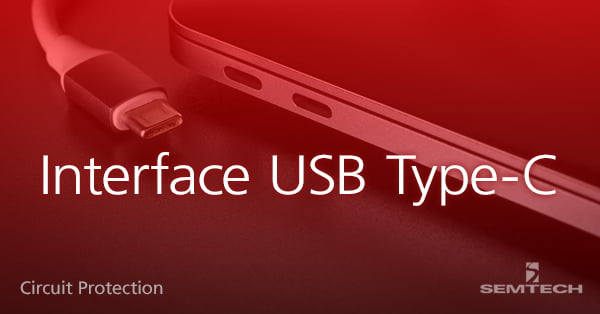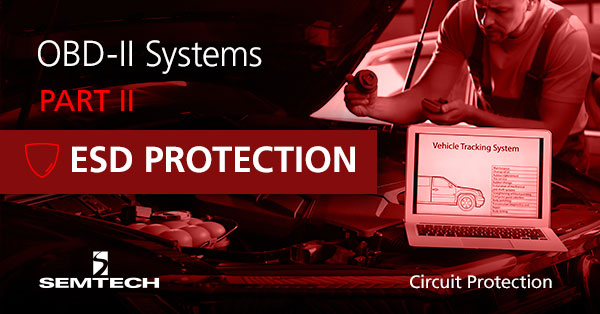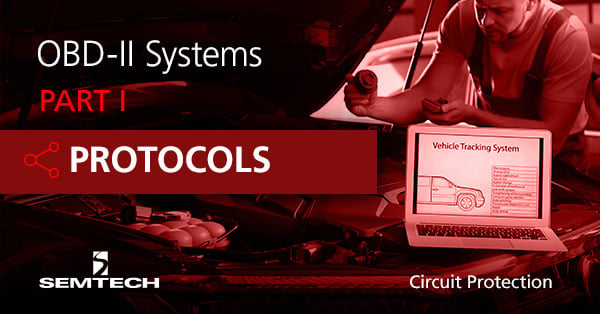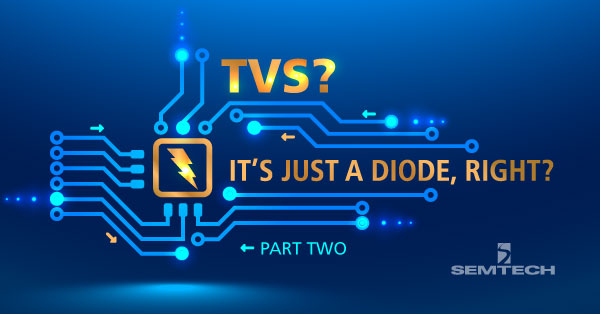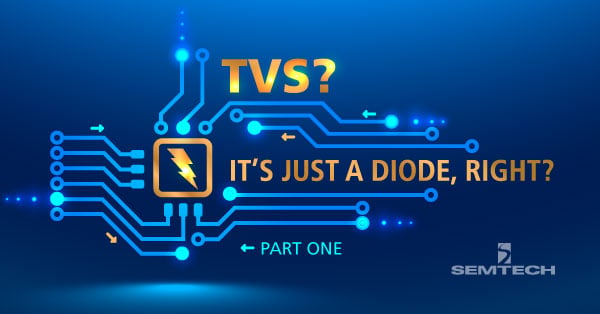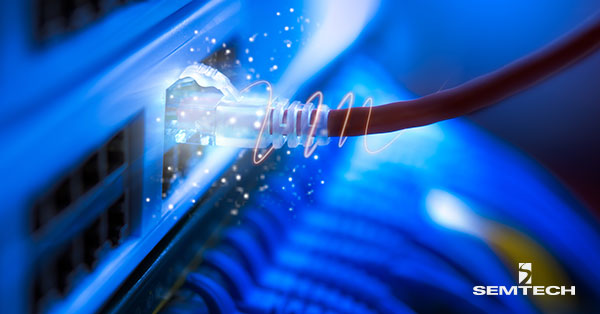Imagine this common scenario: not having a spare Universal Serial Bus (USB) port on your computer. All your personal devices are connected. On most days, I carry a mobile phone, smart watch, wireless headset, and a Wi-Fi adapter – all of which can only be charged via a USB port. When I need to back up files on my computer, I often use a USB flash drive. When charging devices in the car, I use standard USB ports. USB is everywhere! It is so ingrained into our daily lives that it is a part of our every digital experience.
Circuit Protection (3)
Often I hear an analogy made about transient voltage suppressor (TVS) protection components that goes something along the lines of this: “TVS components are a great insurance policy,” or, “think of using electrostatic discharge (ESD) protection diodes as an insurance against ESD damage,” or, “you may not need it, but if you want a little additional insurance, consider adding a TVS array on this circuit.” The idea is that when design engineers invest in using TVS components for circuit protection it is like a “hedge” or added “insurance” against some unforeseen ESD or transient damage that might occur in the future.
Tags: Circuit Protection
Just a few short weeks ago, I had the privilege of speaking at the Society of Women Engineers (SWE) collegiate section at California Polytechnic State University, San Luis Obispo (Cal Poly SLO). Having been an active SWE member for five years and the 2019-2020 Section President for the San Buenaventura professional section, I was beyond thrilled to have the opportunity to represent Semtech at an event for SWE. This was able to take place thanks to a company culture of community building and enthusiastic support from Semtech leadership. Semtech’s CEO has spoken previously, such as in a recent interview with Authority Magazine, on the importance of diversity, setting the tone for Semtech’s commitment to a diverse workforce. Diversity meets inclusion when each member of the team takes the Semtech Core Value of treating all with dignity and respect, and applies that to supporting a global team and a commitment to recruiting with diversity in mind.
Tags: Company, Circuit Protection, ESG
This is the second blog in a two-part series about ESD protection of OBD-II ports. Read the first part here.
Tags: Circuit Protection
Think about a situation when you ordered merchandise online and you were eagerly expecting this package. Each day you watched through your window for the delivery truck to arrive, but unfortunately, it ended up arriving later than expected. In such a case, you would have benefited from a tracking system via your phone or computer. Then, you could know exactly when your package would arrive. Or think about another situation, when your child is picked up from school by the after-school service provider and you wonder if he or she has reached the destination safely. If there was an option to track the vehicle through your phone during your child’s journey it would be very useful.
Tags: Circuit Protection, ESG
One of the most misunderstood ratings for transient voltage suppressor (TVS) diodes is peak pulse power (PPP). Many engineers will select surge protection components based primarily on rated peak pulse power and assume that their system will be well protected. After all, it seems logical to assume that a higher power rating means the device can absorb higher transient currents and therefore should be superior. While peak pulse power ratings may be considered in the selection process, the device should not be chosen solely on this parameter. To illustrate why, let us review the definition of TVS peak pulse power.
Tags: Circuit Protection
Reducing Clamping Voltage
In part one, we learned transient voltage suppressor (TVS) clamping voltage is a key protection parameter. TVS manufacturers are constantly working to lower clamping voltage to keep up with ever shrinking IC geometries and increased sensitivity to overvoltage events. One method to achieve lower clamping is to engineer the device to “snapback” to a lower voltage once triggered. The snapback can be shallow, or deep depending on the intended application. One method of achieving a deep snapback is to design a self-triggering thyristor TVS structure (Figure 4).

Tags: Circuit Protection
I cannot tell you how many times I have heard this in reference to silicon-based Transient Voltage Suppressors (TVS). In all fairness, TVS manufacturers have probably perpetuated this notion. After all, we usually refer to these devices as TVS diodes or electrostatic discharge (ESD) protection diodes. Technically, a diode is a two terminal device that conducts current primarily in one direction. A TVS, or TVS diode, is a two terminal device that is designed to conduct current in the reverse breakdown region. However, calling it “just a diode” implies any TVS diode, or any diode type for that matter, can be effortlessly chosen and relied upon to protect your circuit. Following this assumption will most likely lead to disappointing results.
Tags: Circuit Protection
Ethernet ports are exposed to external transient events in the form of electrostatic discharge (ESD), electrical fast transient (EFT), lightning, and cable discharge events (CDE). External transient voltage suppressor (TVS) diodes are commonly used to protect the Ethernet PHY chips from these threats. However, we find that a lot of confusion exists on how to best connect the TVS diode for maximum effectiveness. Common wisdom would suggest connecting the diode near the RJ-45 connector, from each signal line to ground. In actuality, the TVS should be connected across the signal pair and located on the PHY side of the connector. In this blog, we will examine why.

Tags: Circuit Protection
Gateways featuring Semtech’s LoRa® devices often reside in electrically harsh industrial environments. As the centerpiece for a LoRaWAN® network, these gateways need to operate in the field for many years. The longevity of the network requires that gateways be immune to a range of transient threats the equipment may encounter over its lifetime. As such, gateway data ports need to be safeguarded from overvoltage transient threats, including electrostatic discharge (ESD), electrical fast transients (EFT) and lightning surge.
Tags: LoRa, Circuit Protection, Wireless RF, Internet of Things
